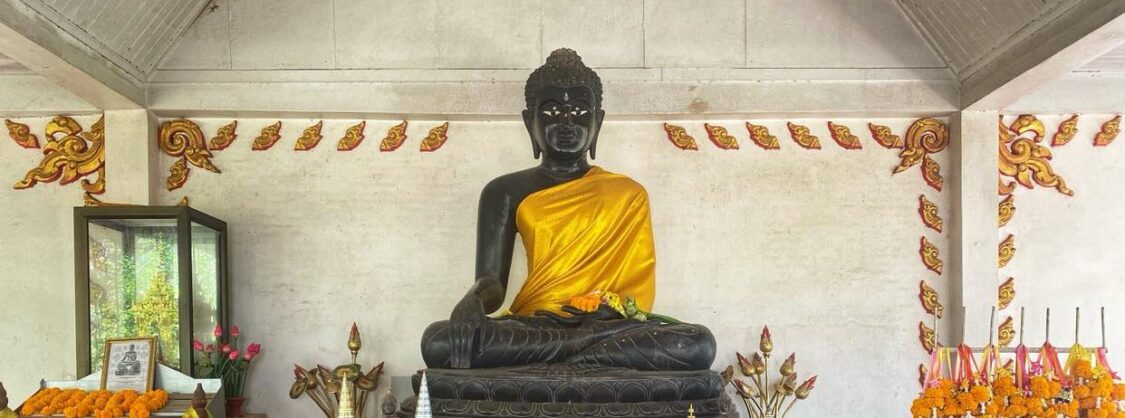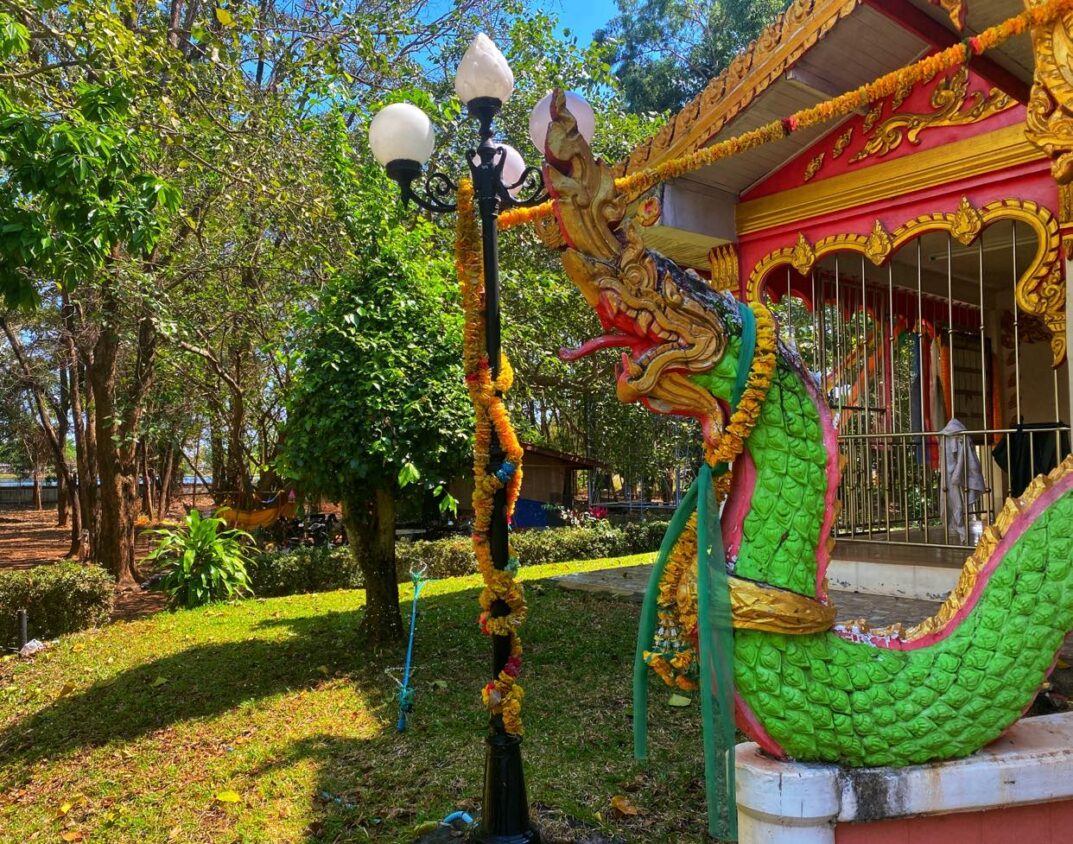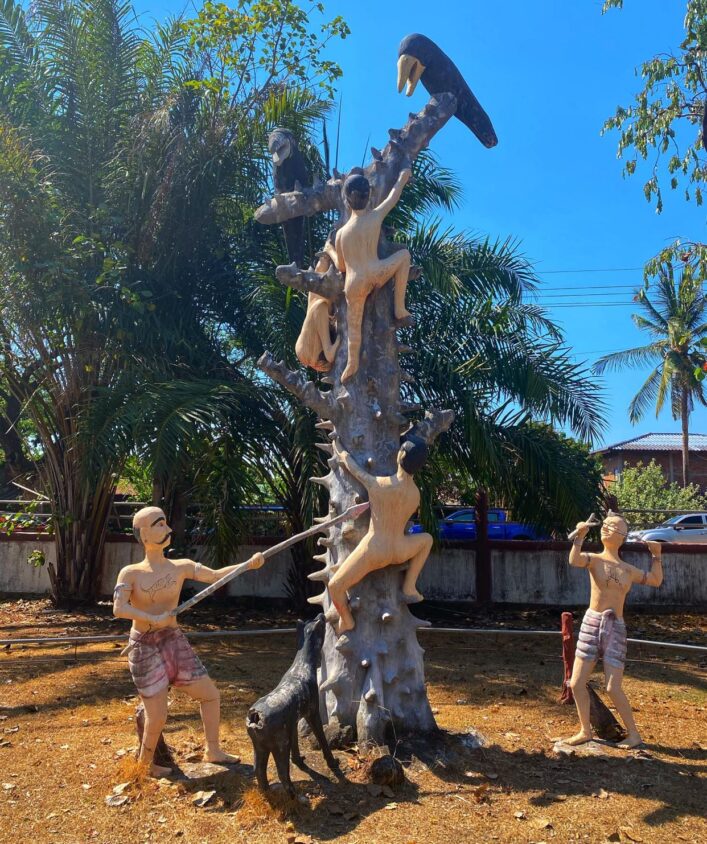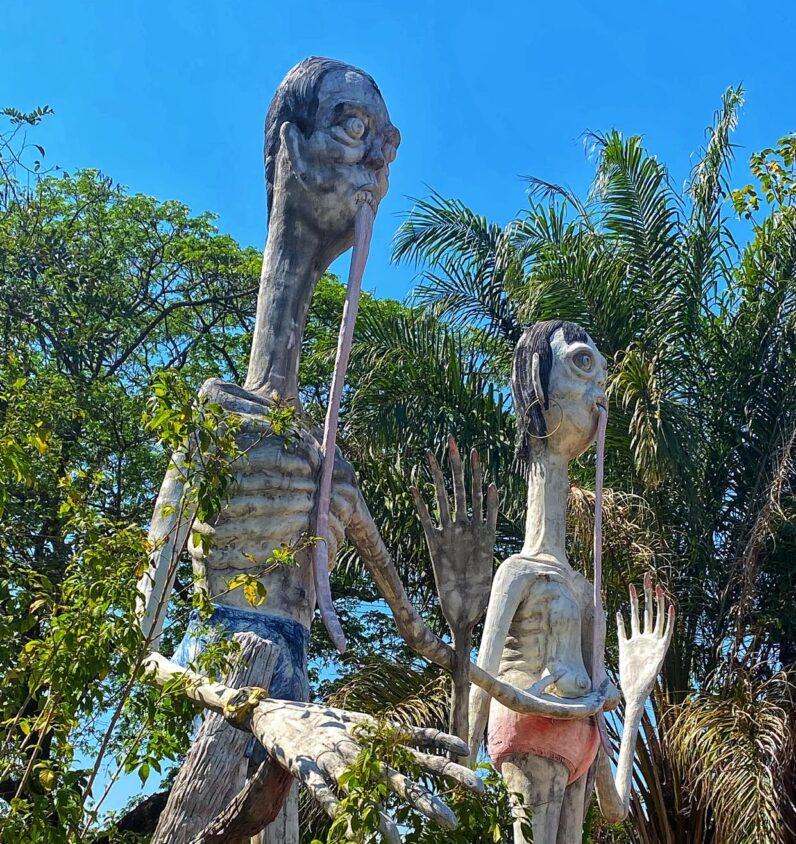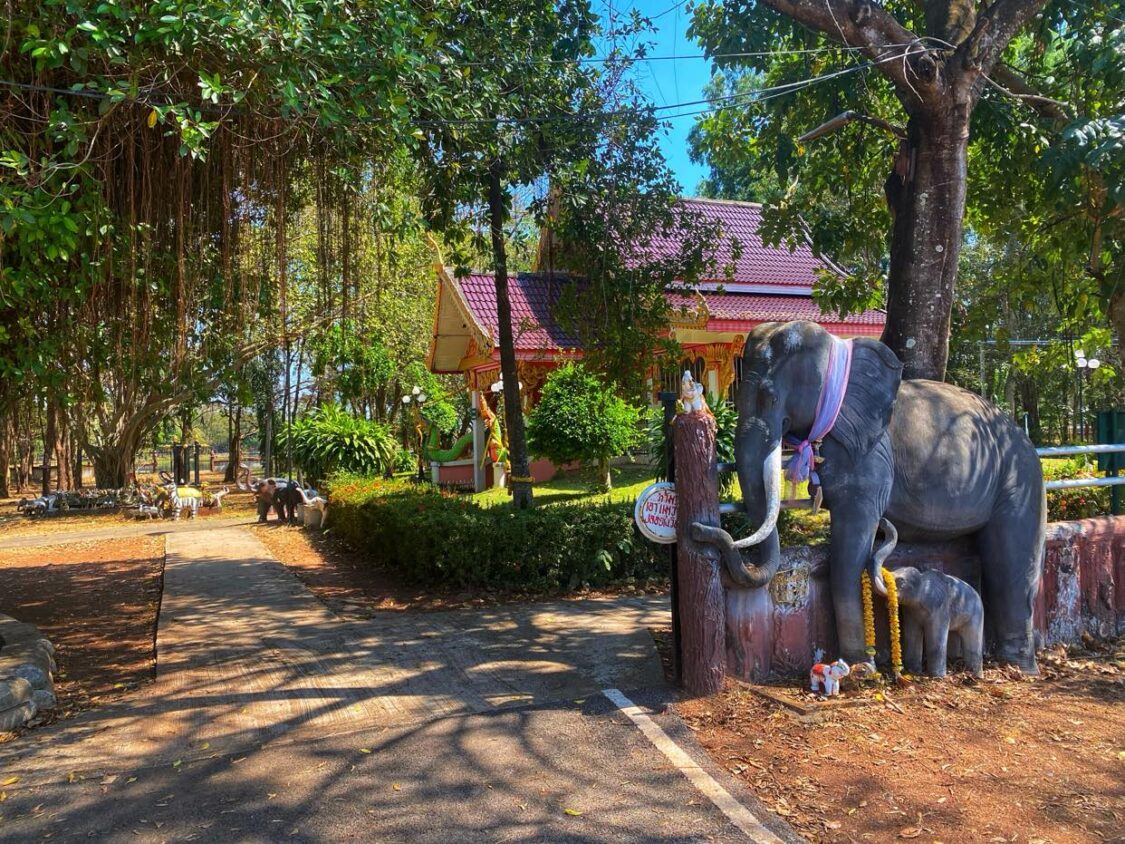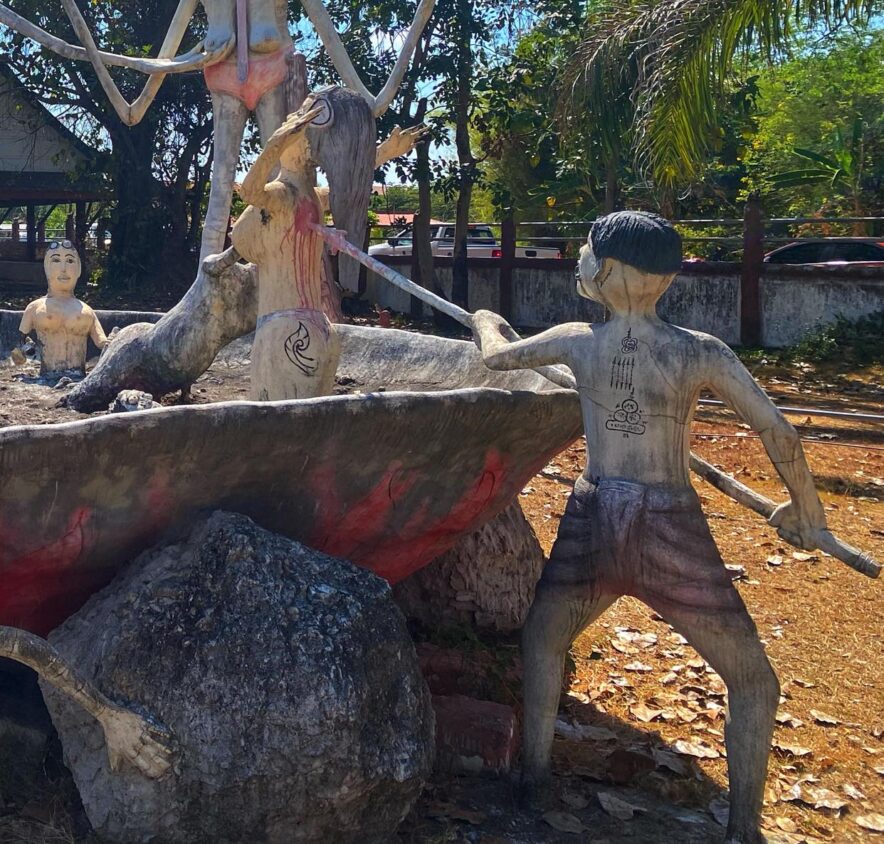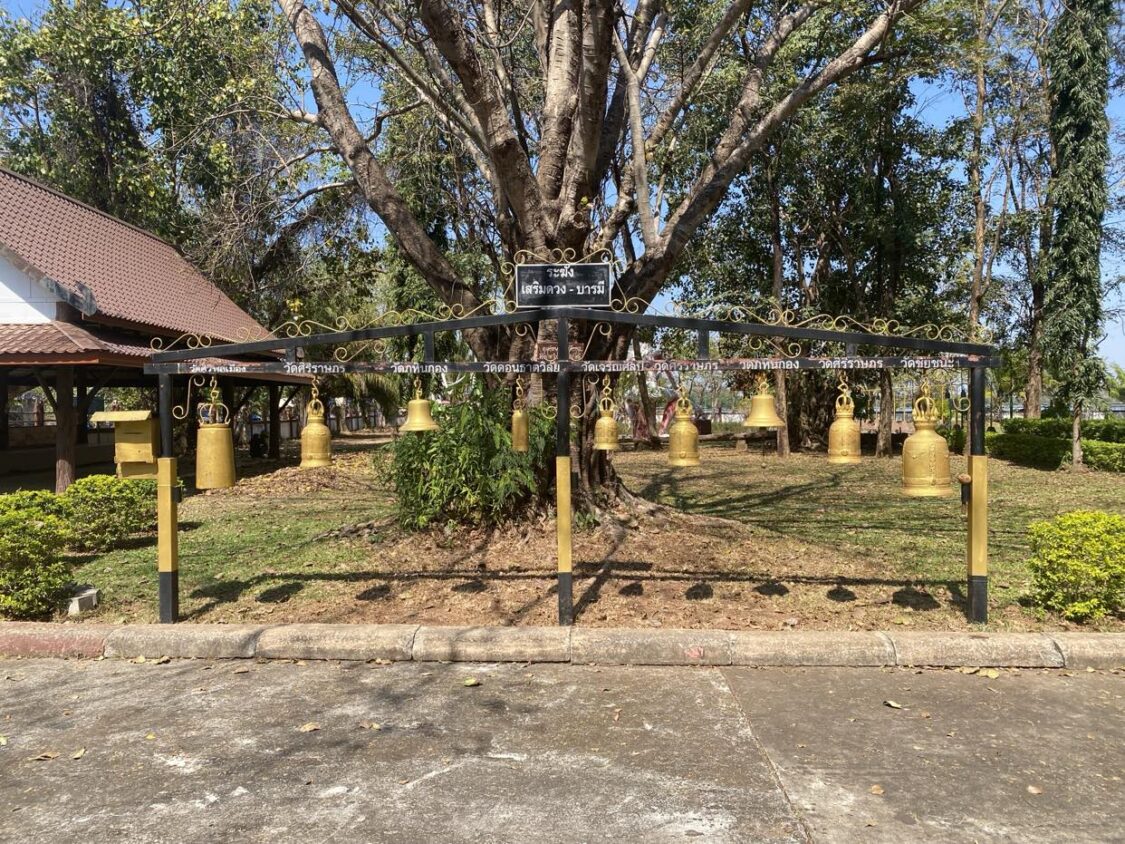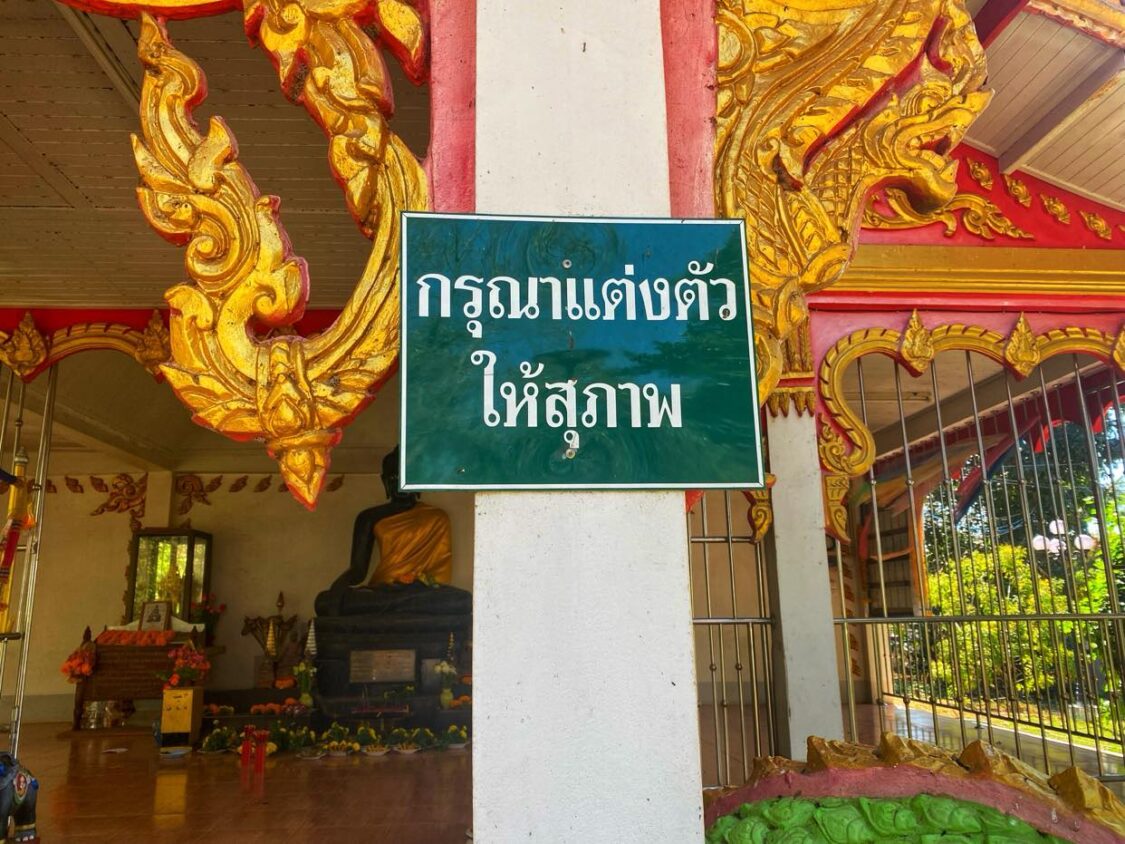Description
One of the most revered sites of Amphur Charoen Sin in Sakon Nakhon is the City Pillar Shrine (วิหารหลักเมือง), which houses a replica statue of Luang Phor Ong Dam (หลวงพ่อพุทธองค์ดำ). Known in India as the "Black Buddha," Luang Pho Ong Dam was crafted during the reign of King Devapala of the Pala Dynasty (circa 810–850 CE), a golden age for Buddhism in India.
During this time, Nalanda University flourished as a renowned center of learning, attracting monks and scholars from across Asia. Under the patronage of the Pala rulers, master artisans carved the statue from dark stone — likely basalt — giving it the deep, almost inky black color.
What makes the original "Black Buddha" sculpture so extraordinary is its survival through one of the darkest chapters in Indian Buddhist history. In 1223 CE, the Turkic general Bakhtiyar Khilji led an invasion that devastated Nalanda University. Its sprawling libraries and sacred shrines were set ablaze, with flames said to have burned for months, consuming countless manuscripts and statues.
Yet, despite the destruction, Luang Pho Ong Dam remained largely intact. Though it now bears signs of age — a chipped nose, worn fingers — it endured while so many other treasures were lost. To many, its survival is nothing short of miraculous, a powerful symbol of Buddhism’s strength.
The Luang Phor Ong Dam replica at the City Pillar Shrine (วิหารหลักเมือง หลวงพ่อองค์ดำ) was built in 1995, and is said to have the power to heal the sick. It attracts worshipers from Sakon Nakhon throughout the year, and special events are held every April 8th and 9th to show respect to this sacred Buddha image.
Sakon Nakhon Hell Garden
The Charoen Sin City Pillar Shrine is also famous for being home to Sakon Nakhon's only "Hell Garden," a sculpture garden which depicts the torments of hell suffered by those who have behaved badly in life. The garden features the well-known tree of thorns which sinners are forced to climb up, as well as two giant "preta" or "hungry ghosts" with their long extended tongues and gruesome faces.
For those interested in Thai Buddhism's depictions of hell, there is also a "Hall of Karma" located at Wat Khao Tham Phra that depicts whats awaits those who ignore the dharma.

